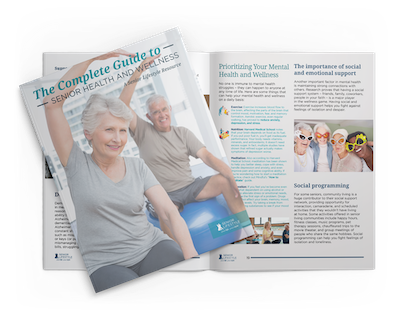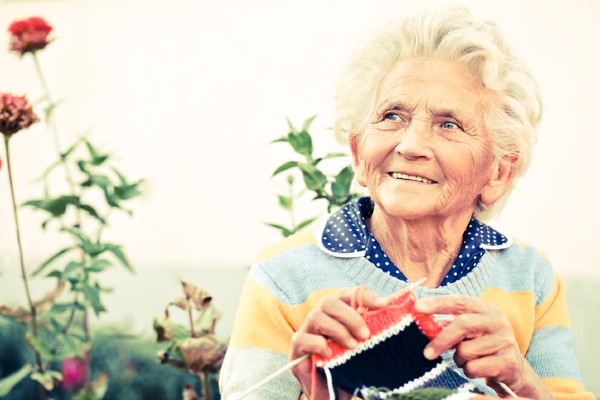Trouble with your hands and loss of finger dexterity can happen at any age, but it’s more common as you hit 50 years and older. According to a study cited by Physiopedia, musculoskeletal hand problems are common in those over 50, and increase after age 65.
But merely increasing hand strength isn’t always the answer. A study in BMC Geriatrics indicates that hand dexterity is more important for seniors. It says well-functioning hands and fingers are associated with strong executive function, which are the mental skills that include flexible thinking, self-control and working memory. The study found that poor dexterity may indicate a higher risk of memory impairment.
Find out more about what can affect your hands and some hand and finger dexterity exercises that can help seniors.
How Your Hands Can Weaken
Some health conditions can also affect your hand health. According to AARP, these common conditions can cause weakness and pain:
Carpal Tunnel Syndrome
This can occur when the nerve that runs from the neck to the thumb to the ring finger is compressed at the wrist. This causes hand pain, numbness, tingling or weakness. Fingers may also feel stiff, swollen or tight. This may cause a loss in thumb strength and dexterity.

Download The Complete Guide to Health & Wellness for Seniors
As people grow older, their health and wellness needs change. Read our eBook, “The Complete Guide to Health & Wellness for Seniors” for everything you need to know about staying healthy and happy as we age.
Download the GuideCubital Tunnel Syndrome
This affects a different nerve running from the neck to the wrist. The nerve, responsible for the hand’s nerve and muscle function, becomes compressed and inflamed at the elbow. Pain can move from the inside of the elbow to the forearm and the small and ring fingers, along with the back of the hand. This can cause hand weakness more prominent than that of carpal tunnel syndrome.
Osteoarthritis
With osteoarthritis, protective joint cartilage wears away, causing weakness and pain. The hands and finger joints may well or get stiff, particularly at the beginning of the day.
Osteoporosis
This disease causes bones to become brittle and weak when the creation of new bone doesn’t keep pace with the loss of old bone. This can cause issues for your hands because a hand or wrist fracture can be caused by a fall or even minor stress.
Rheumatoid Arthritis
This is a chronic inflammatory disease that affects the lining of the joints and tendons, along with other areas. Smaller joints are often affected first, causing pain, stiffness and swelling in the fingers.
All of these conditions should be diagnosed and treated by a doctor. Along with the course of treatment, there are other ways to improve dexterity as you age.
How to Improve Your Dexterity
Here are 10 easy exercises and activities that can help you build dexterity and strength in your hands and fingers.
1. Do Finger Lifts
Place your hand palm down on a flat surface such as a table. Lift a finger off the table one at a time, which can be quite a challenge as your fingers may tend to move together. Repeat each finger several times before moving on. This will help you gain flexibility in each finger.
2. Learn a Musical Instrument
Learning to play a clarinet, flute, guitar, piano or violin, for example, can help flex your fingers and work your hand muscles. If this seems too challenging, listen to music and clap your hands or snap your fingers along to the beat.
3. Make a Fist
Squeeze inward on the fist as hard as you can manage. Hold for three to five seconds, and release slowly. Do the same with the other hand, and repeat five times for each. This will help increase dexterity.
4. Play String Games
Cat’s cradle and other string games keep your hands and fingers strong and flexible. Plus, it’s something you can do by yourself. Get a length of string, yarn or shoestring, about 30 to 80 inches in length. Follow the instructions you can find in a book or online. This will work your fingers, hands and your mind.
5. Practice Handwriting
Start with picking up a pencil or pen without your thumb, and try to write. This fun exercise gives your brain a workout, too. Then, write with your non-dominant hand, which is more likely to lose dexterity faster than your dominant hand. Try this a couple of times each day.
6. Sort Small Items
Use beads, buttons, coins, jewelry, pasta shapes, seeds – anything that can be picked up and sorted. Use small cups or empty ice cube trays to keep the pieces when you’re sorting.
7. Take Up Origami
This paper-folding craft is colorful and fun. Get some folding paper and origami designs to get started, either online or in a book. While you work your fingers, you’ll end up with colorful paper flowers, animals, boxes and other fun designs.
8. Try Knitting and Sewing
Not only can you create fun and useful items, sewing and knitting can make your fingers more dexterous. Try other needlecrafts also like crochet, cross stitching and needlepoint, or non-needle crafts such as macrame.
9. Use Clay or Putty
Working your fingers with clay or putty can help you improve and maintain dexterity. Make shapes, use small cookie cutters or roll the material out into lengths. Some seniors may want to mix coins, buttons or beads into the clay, then dig them out to work your fingers.
10. Work With a Locks and Latches Board
A length of board fitted with locks and latches or nuts and bolts can keep you occupied a few times a day, providing good exercise for your hands. The motions will keep your mind working while keeping your fingers supple.
Senior Lifestyle Looks Out For Your Health
Our Senior Lifestyle communities have your best in mind, whether your physical or emotional needs. Read our article, “7 Ways Senior Communities Promote Health & Wellness,” to learn more. Our communities focus on providing activities, connection and safety, with medical care geared toward your needs. Find out more about Senior Lifestyle or find a community near you today.

